Church was once centre of now vanished parish
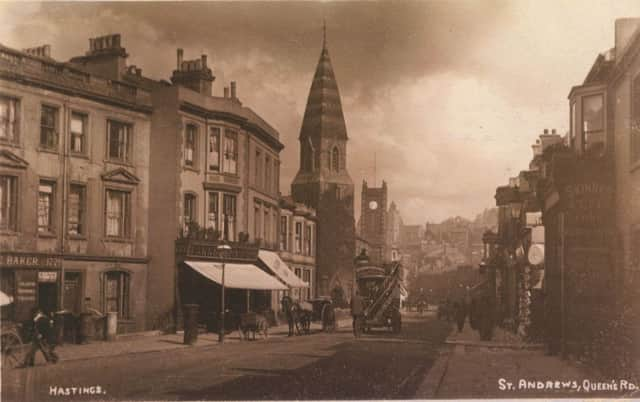

He writes. The area of greatest change in Queens Road’s street scene is the area around the site of St. Andrews Church and the former Gas Showrooms.
This extends from the junction with Cornwallis Street to the entrance to Morrison’s Car park on the western side and Elford Street, (formerly Wellington Mews) on the eastern side to what had been confusingly named Prospect Place and is now Stonefield Place (it was renamed around the first war era), on the eastern side.
Advertisement
Hide AdAdvertisement
Hide AdThis whole area had been St Andrews Road and before that St.Andrews Terrace until, in 1883, following the visit of the Prince and Princess of Wales the previous year, it was renamed Queens Road and the properties were re-numbered; for example, No 36 St Andrews Terrace dating from around 1836, became 48 St Andrews Road before ending up as No 84 Queens Road.
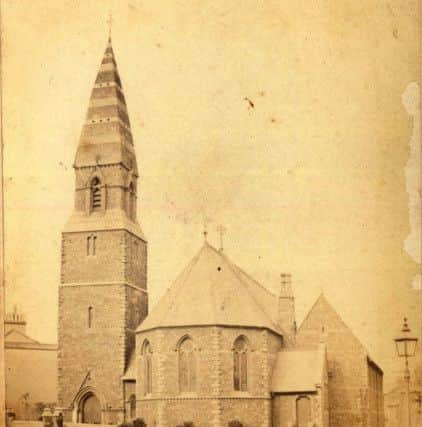

The Church of the Parish of St.Andrew was erected in 1869, mostly at the expense of Miss Maria Jane Sayer, one of the locally powerful Sayer-Milward family who also provided an endowment fund to help meet the expenses of future repairs etc.
The building was consecrated on St. Andrews Day, 30th November 1870, and consisted of Nave, South Aisle, and Apse Chancel. It cost £3,600 and had room for 450 people, 225 seats to be free for ever, for the use of the poorest parishioners. (What would happen if there had been no ‘free seats’? ).
It was thought that it would be large enough to meet the requirements of the neighbourhood for some time to come, However, owing to the sudden rapid increase in the population (from 14,016 in 1851 to 37,842 twenty years later), and the great popularity of the vicar, the church was enlarged in 1873 with the erection of a new aisle on the North side.
Advertisement
Hide AdAdvertisement
Hide AdIn the 1960’s vandals desecrated the murals by painting slogans in red paint on them which resulting in the church interior being painted white and a few years later the church was declared redundant and was demolished in 1970 to make way for a Petrol Station.
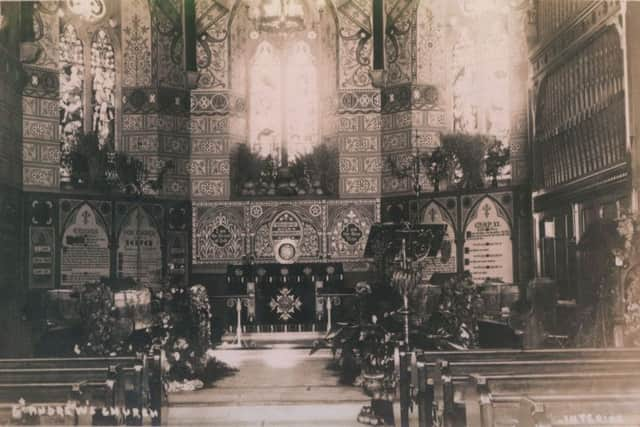

The church’s immediate neighbour was the Hastings & St.Leonards Gas Company that had been established on 1st January 1832, and the original works were between what is now Queens Road and the railway, in what would have been, in those days, a fairly isolated spot beside the Priory Stream.
A newspaper report in the Cinque Ports Iris at the time noted “The Gas Works are now nearly roofed in and are sufficiently near completion to shew that they will form a handsome range of buildings and will be a great ornament to the neighbourhood. We only regret that they should be placed where they will be seen so seldom and to such little advantage” The handsome range of buildings with a tower that fronted on to Queens Road and were better known as the Gas Showrooms were built in 1876 and included an arch roofed drive through the centre of the showrooms proclaiming, on the inside of the arch, “Our motto is Service” The gas works was cleared and the showrooms were pulled down in 1984 and the site of the showroom is now the access to Morrison’s Supermarket.
All illustrations throughout this series are from Ion Castro’s own collection and he can make available copies of many of the historic images used in this series. Ion has had the 1933 Book illustrating the centenary of the gas company reprinted, it can be obtained from him for £7.99 + postage, contact [email protected] or tel 01424 437468 and there’s more local history on Ion’s website, www.historichastings.co.uk
Captions.
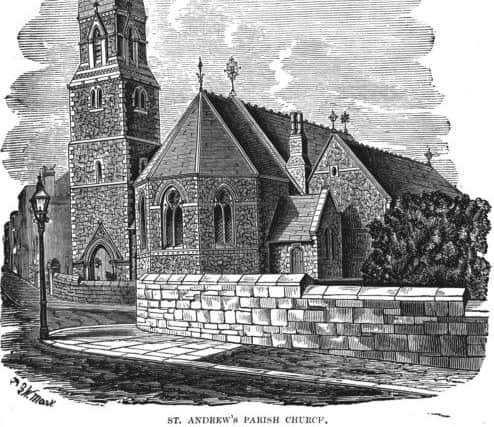

Whitehouse 177a.
Advertisement
Hide AdAdvertisement
Hide AdToday the street sign for Cornwallis Street is a little misleading, it’s at 1st floor level to the right of this shop suggesting that it isn’t in Queens Road. The advertisement dates from 1891.
St Andrews.
This postcard by an unknown photographer dates from the very early 1900’s before the advent of the tramways, Mrs E Baker’s Wardrobe emporium, Whitehouse’s opticians of a decade or so earlier, and clearly numbered 177a (Queens Road) can be clearly seen on the left, apparently in Cornwallis Street. The postbox is still there but the Church, the gas showrooms behind it and behind that Hastings Grammar School have all fallen victim to demolition.
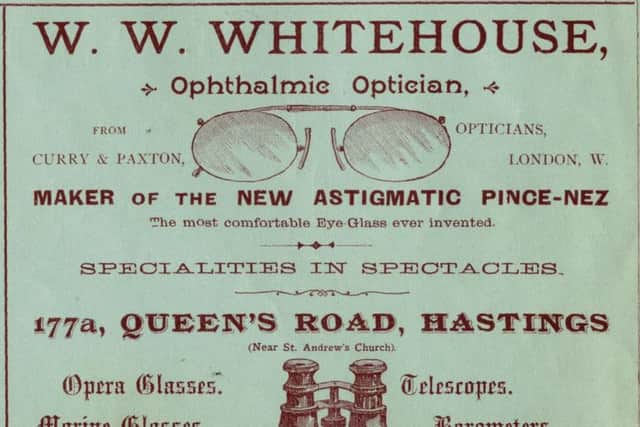

St Andrews Church.
Mid 1870’s, the side wall on the left is No 172 Queens Road. The new aisle can be seen on the right of the church, and behind the lamp post one of the then entrances to the Gas Works
St Andrews Church 1886.
From Parson’s Illustrated Guide of 1886 shows the extended church more clearly.
St Andrews Church Interior.
Advertisement
Hide AdAdvertisement
Hide AdIn 1905 Robert Noonan, better known as ‘Robert Tressell’, the author of “The Ragged Trousered Philanthropists” decorated the chancel with a 40 ft. x 20 ft. mural that had been paid for by his employer, Burton & Co who operated from the building behind the ‘Imperial’ pub now occupied by ‘Clipvalve’. By 1906 Noonan had left Burtons. During the demolition of the church and against considerable opposition from the establishment, a fragment of the mural was saved and can now be seen in Hastings Museum.
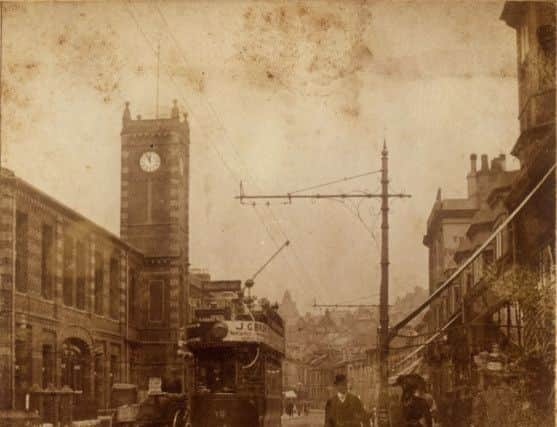

Fellows.
In 1885 G.J.Fellows had three shops facing the Gas Works; his grandson W.J.Fellows was Mayor of Hastings a couple of times in the early 1920’s and WJ’s grandson, the late Ron Fellows, was a well-known local historian.
Map.
On the right, on St Andrews Terrace, is the location of the ‘Cottage Inn’, later the ‘Palmerston’ until it was de-licenced due to redundancy in 1929 and, after a varied career, is now a curry House. Almost behind it, on the corner of Elford Street and Wellington Mews was the ‘Privateer’ that had been there since the middle of the nineteenth century. The building was demolished in 1978 and the site is now a car park. The Fountain Inn can be seen on the corner of Stonefield Place and the church doesn’t show the new aisle. At this time there were a total of three gasometers.
Tram.
This rather worn amateur photograph from early last century shows the gas showrooms on the left, the tram is heading to Hollington via the Memorial and on the right is a glimpse of the Fountain Inn. The silhouette of the old Hastings Grammar School in Nelson Road can be seen on the horizon.
Advertisement
Hide AdAdvertisement
Hide AdDon’t miss out on all the latest breaking news where you live.
Here are four ways you can be sure you’ll be amongst the first to know what’s going on.
1 Make our website your homepage at www.hastingsobserver.co.uk
2 Like our Facebook page at www.facebook.com/hastingsobserver
3 Follow us on Twitter @HastingsObs
Advertisement
Hide AdAdvertisement
Hide Ad4 Register with us by clicking on ‘sign in’ (top right corner). You can then receive our daily newsletter AND add your point of view to stories that you read here.
And do share with your family and friends - so they don’t miss out!
The Hastings Observer - always the first with your local news.
Be part of it.